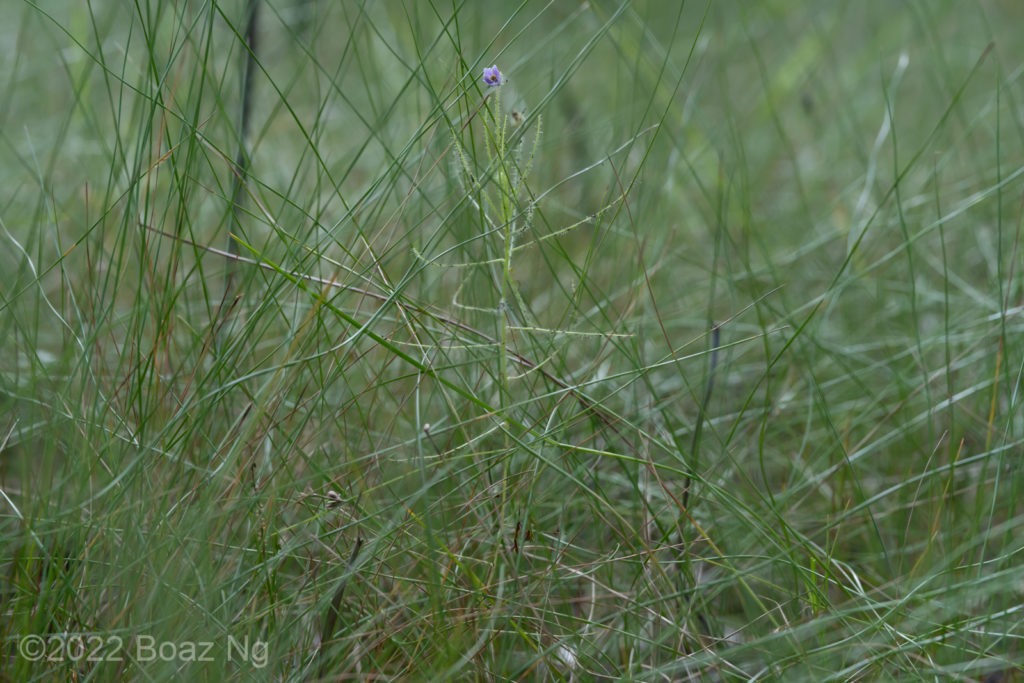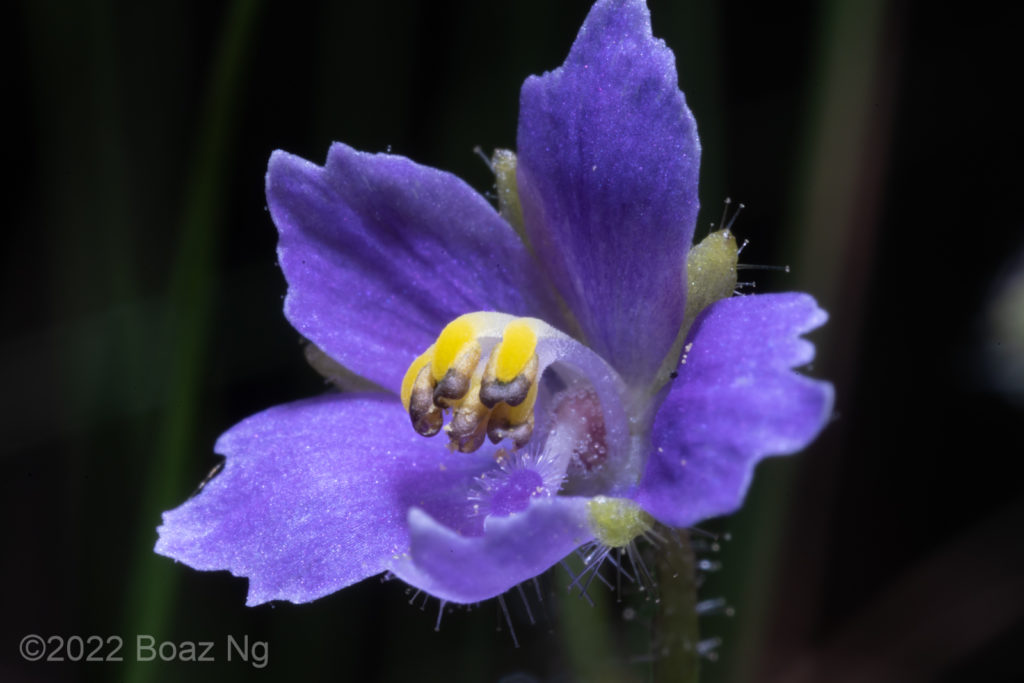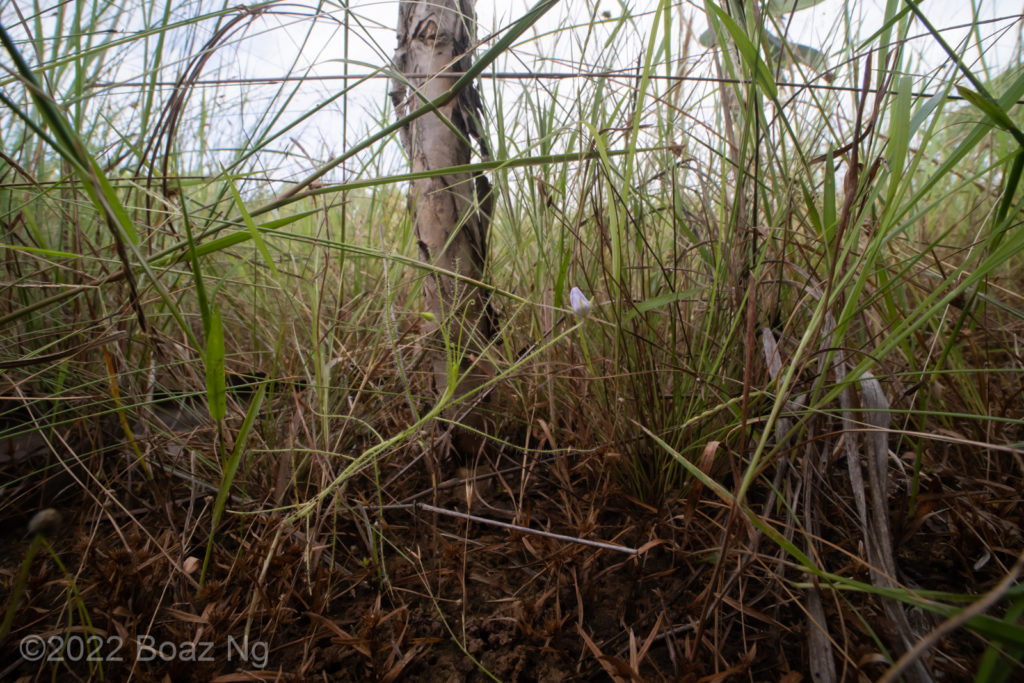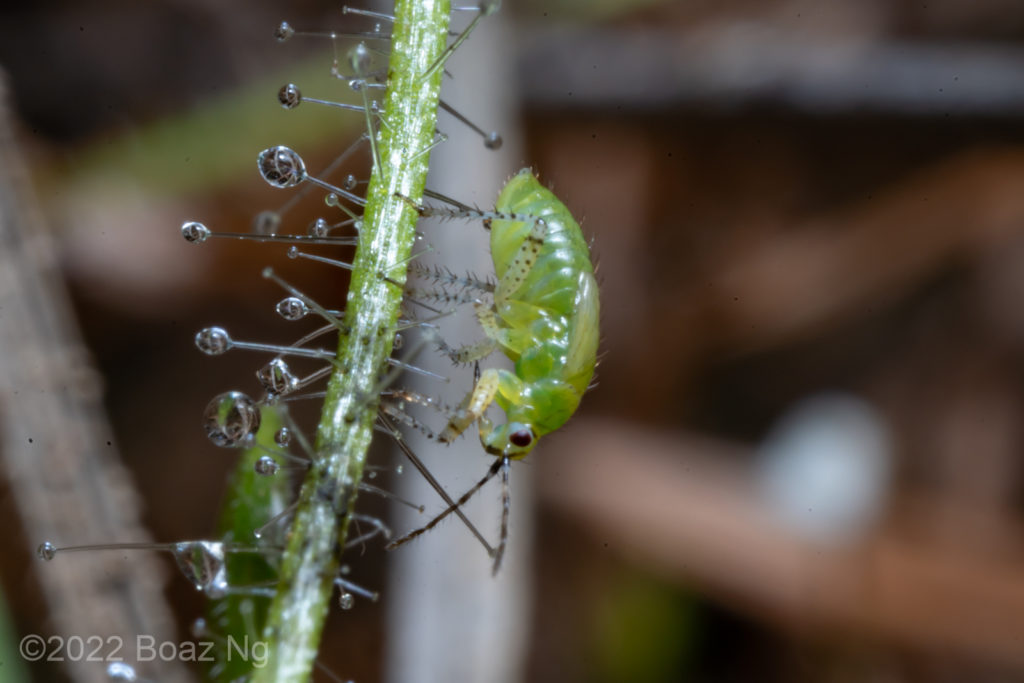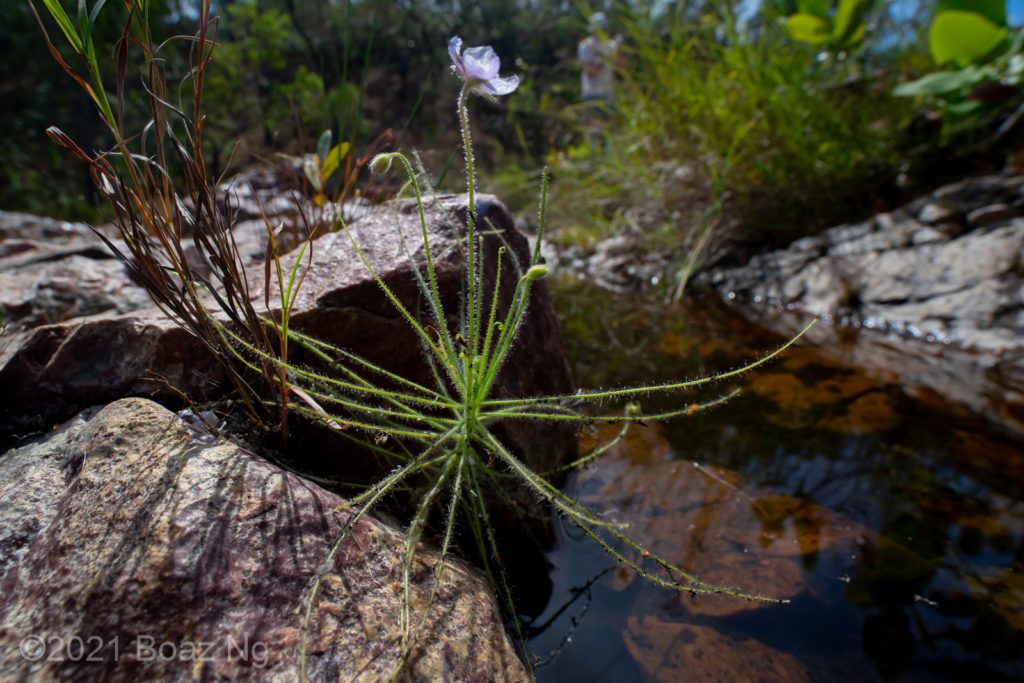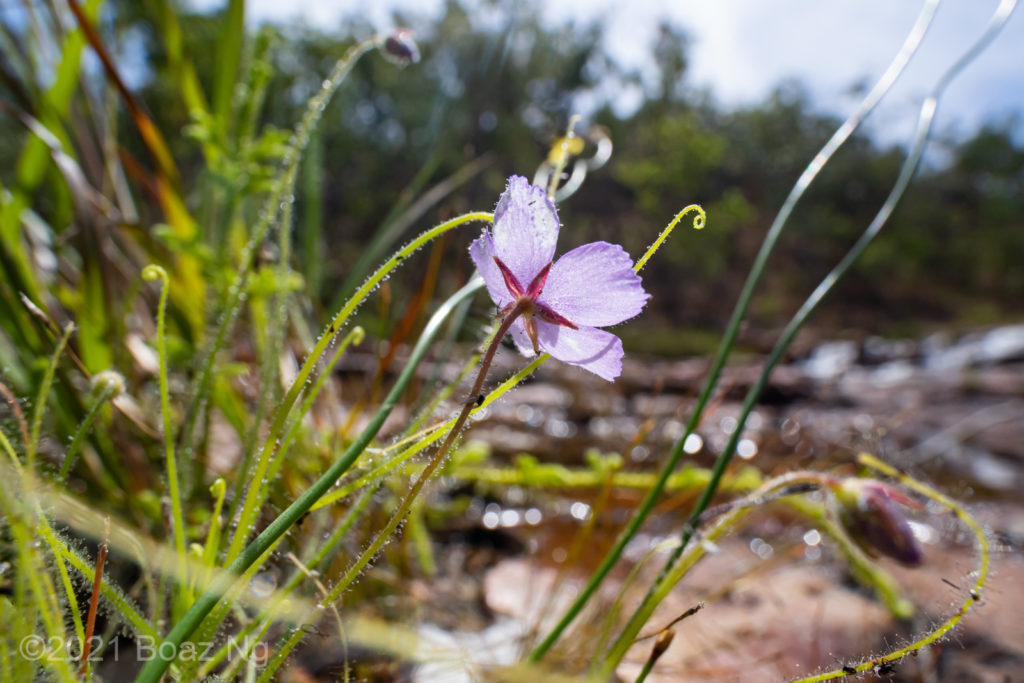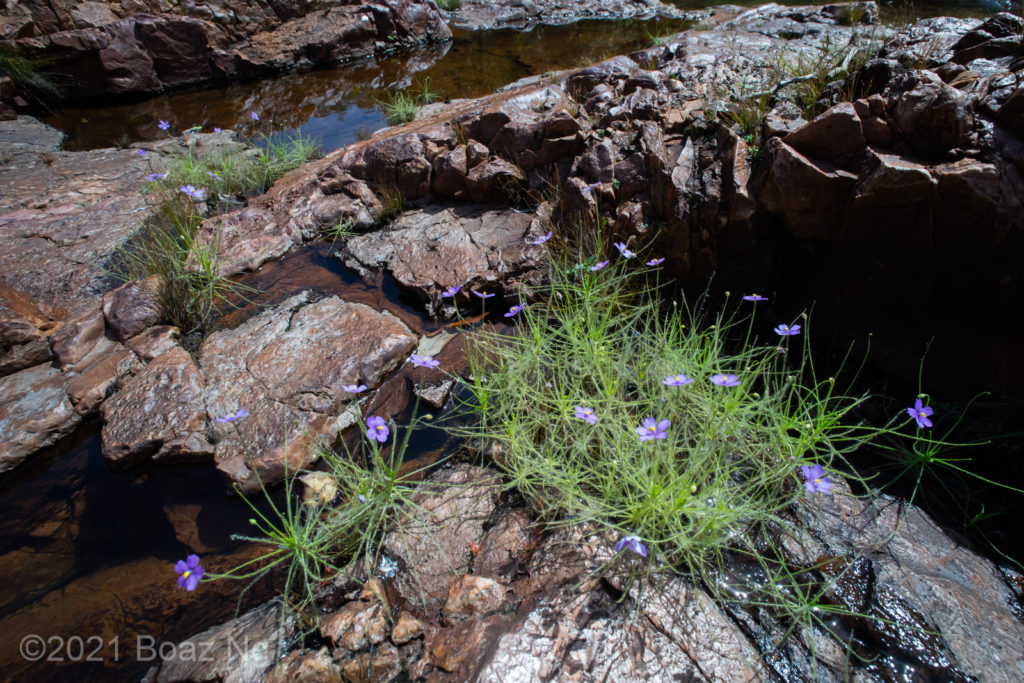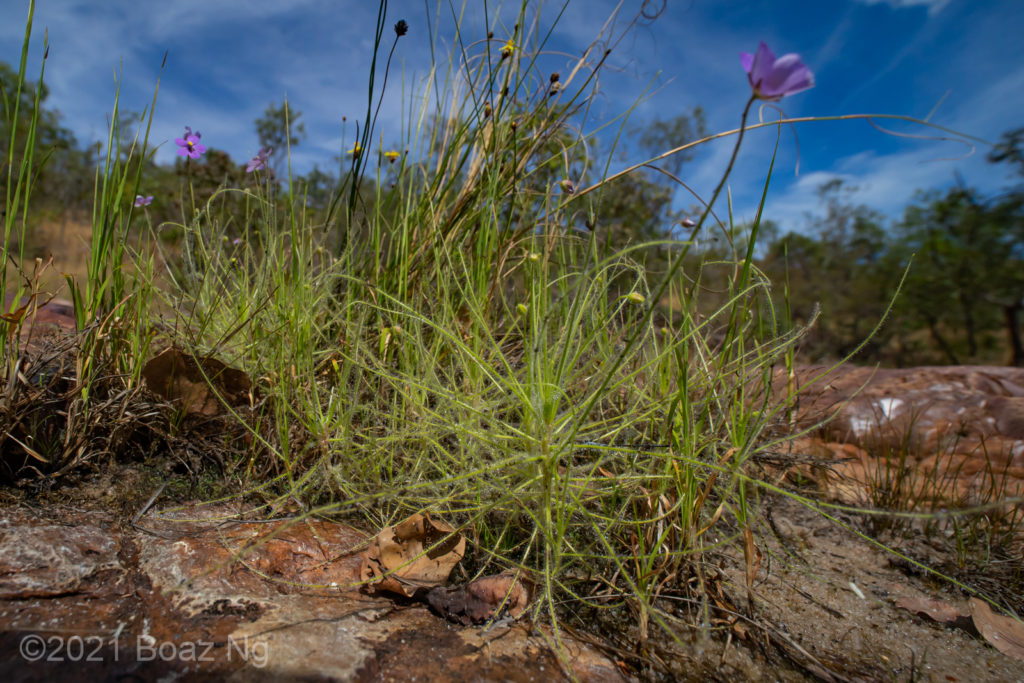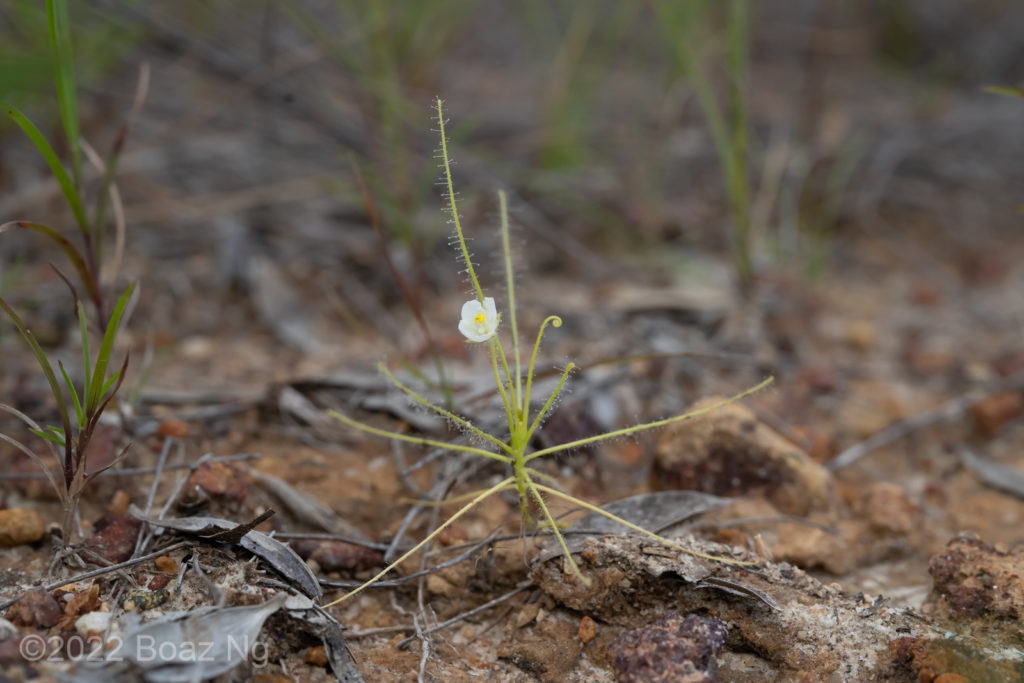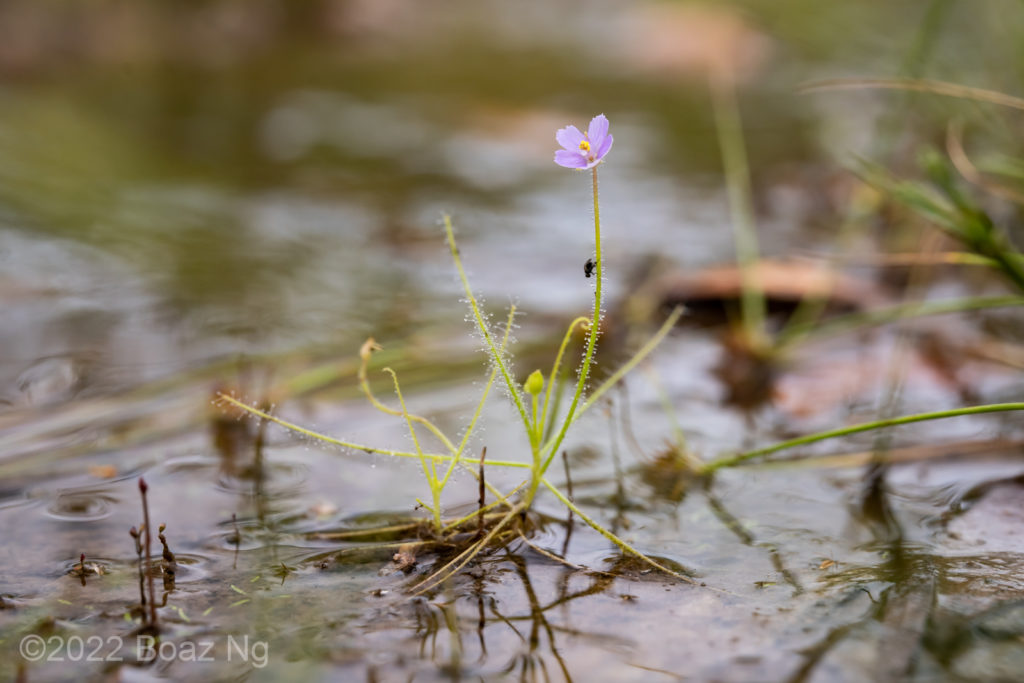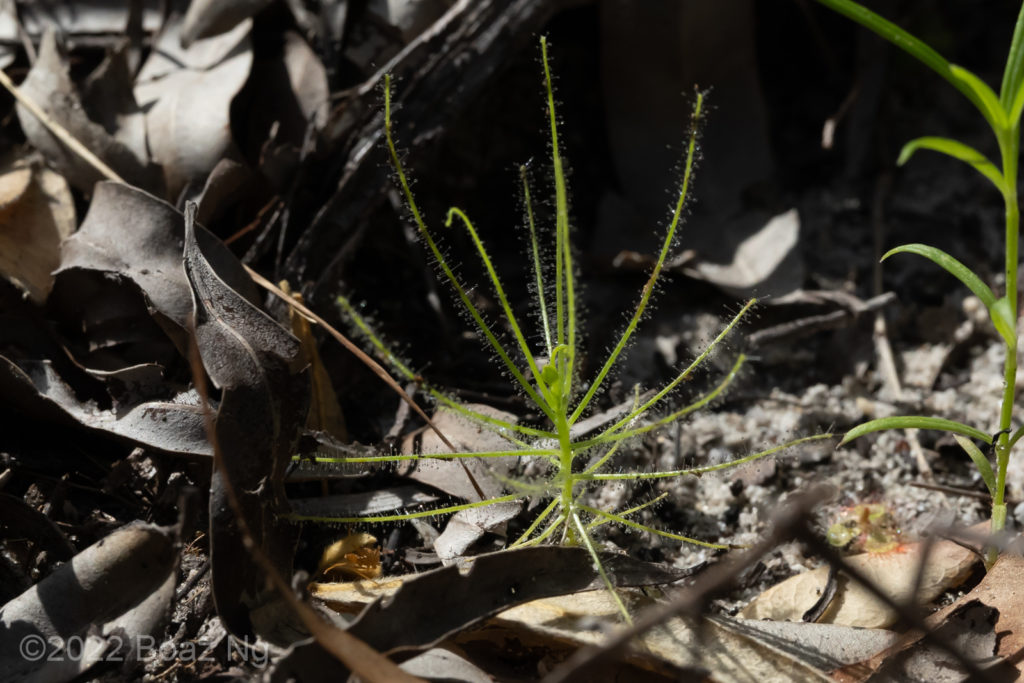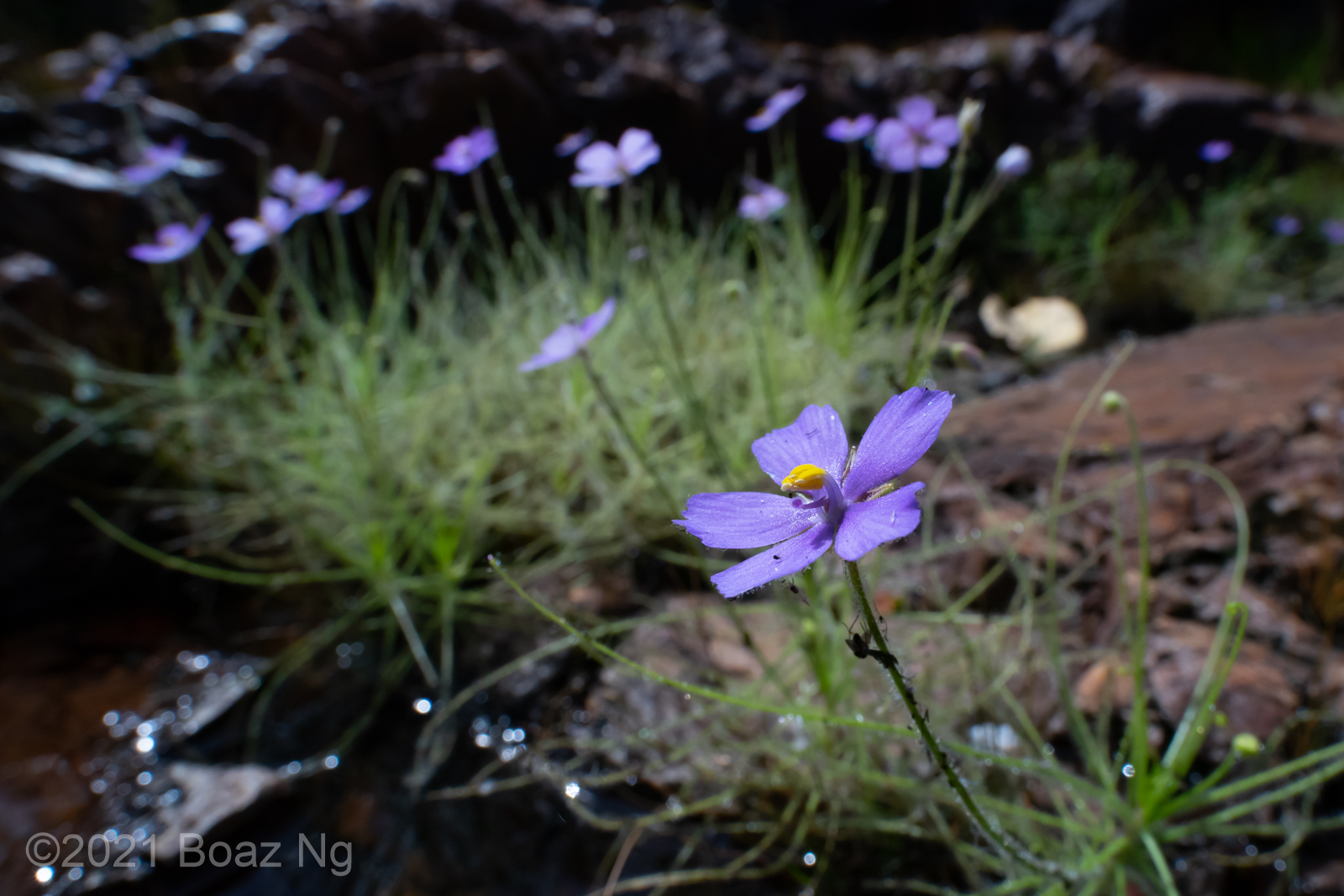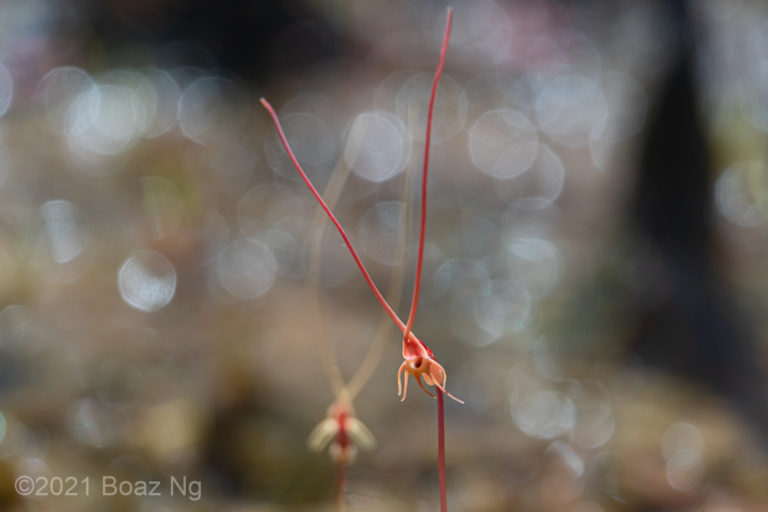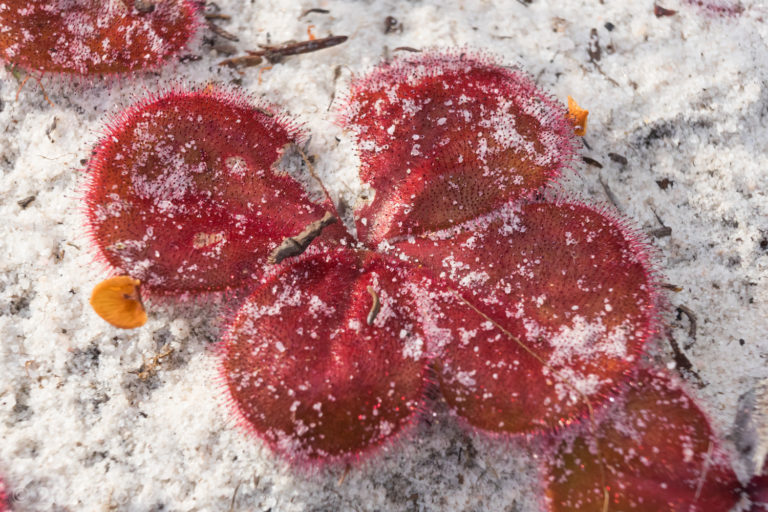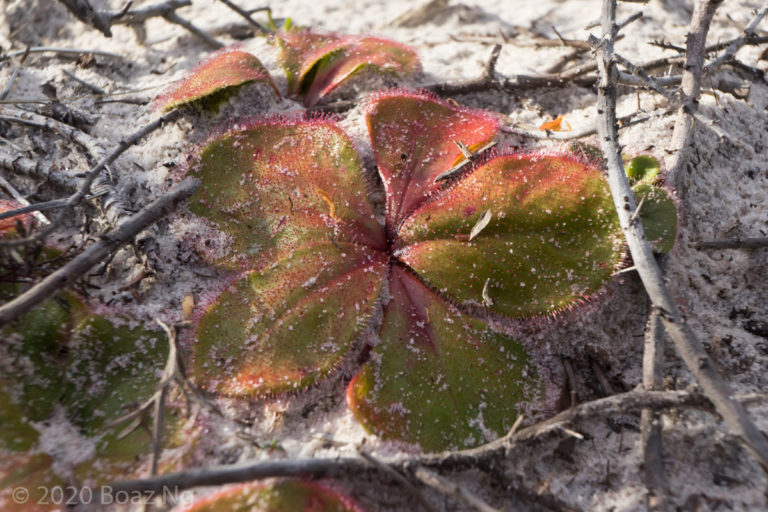Byblis liniflora is a species native to tropical northern Australia. It is named for its flowers, which resemble that of flax.
The species is small to medium in size, reaching up to around 15 cm in diameter and height. The plants usually stay compact in morphology. The leaves are always light green in colour and are completely covered in long, translucent gland-tipped hairs. These hairs collapse on themselves when touched by prey, bringing the captured insects in contact with the surface of the leaf for digestion. The flowers are produced at the end pedicels that are pretty much identical to the leaves. The petals of the bloom are light purple, with serrated edges. The anthers (yellow pollen-bearing structures) are shorter than the filaments (the long appendage attaching the anther to the body of the flower).
I observed the species at near its type location on the banks of the Endeavour River near Cooktown. The plants I saw had well-spaced internodes on the stem between the leaves and climbed amongst grasses for support. I was unable to observe more populations at the locality since I arrived well into the dry season and can not say with certainty that this trait is typical of plants here.
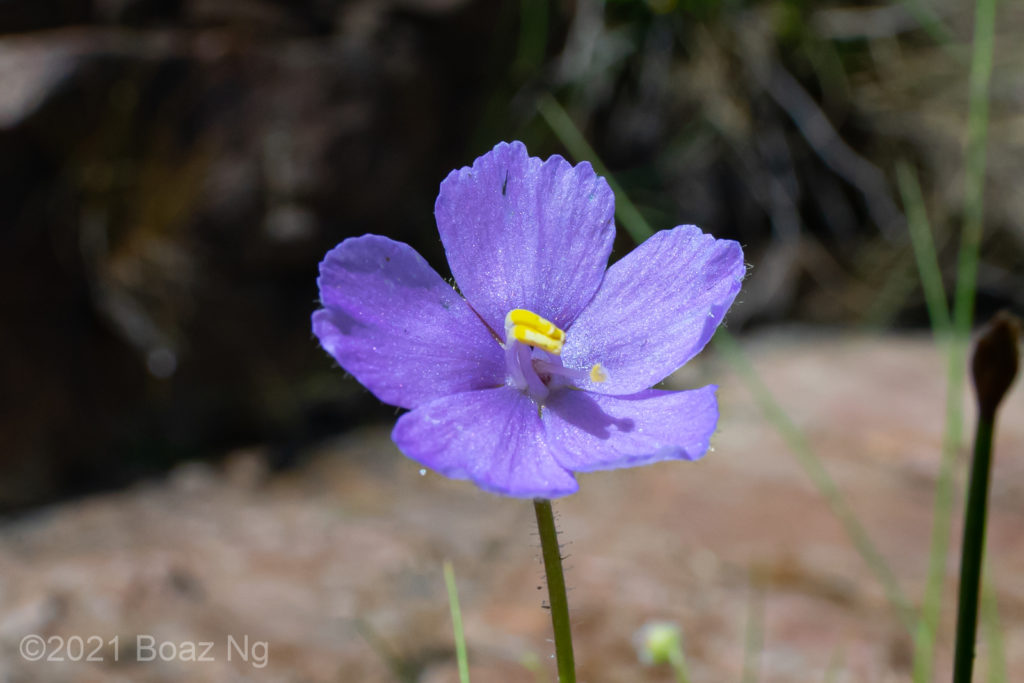
B. liniflora grows in comparatively drier habitats within their distribution which are moistened by the wet season rains but well above the creek lines and swamps. It is not picky about its habitat or substrate, growing in Melaleuca floodplains, heathlands, grassy clearings and edges of forests.
I also observed the species growing in an unusual habitat on cracks on a large sandstone cascade in the Litchfield National Park, with the plants germinating after the water of the creek recedes and continuing to grow until they desiccate in the dry season. The species is an annual and persists through the dry season as seed.
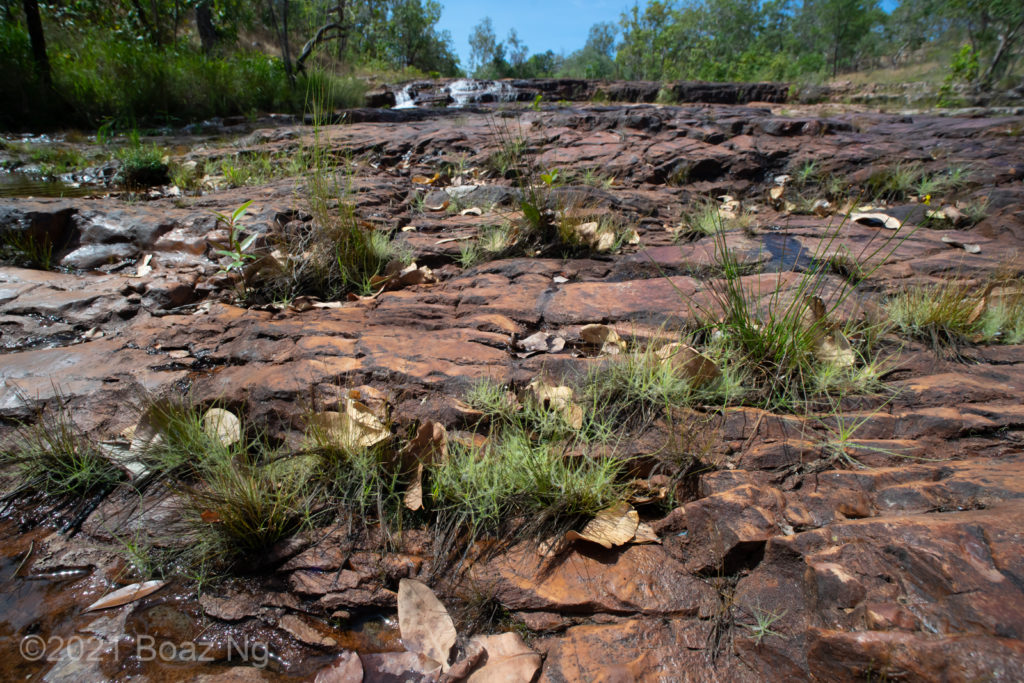
Byblis liniflora, along with B. aquatica, is distinguished from other species within the genus by examining the blooms. In these two species, the anther is shorter than the filament. B. liniflora is sympatric with B. aquatica around Darwin and Far North Queensland, but can be recognised by its compact morphology (B. aquatica grows a long sprawling stem), bright green colouration (B. aquatica usually has a reddish blush), long tentacles (B. aquatica has short tentacles) and preference for drier niches (B. aquatica grows in shallowly flooded areas).
